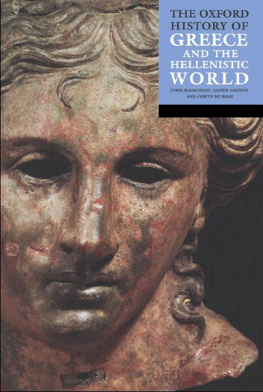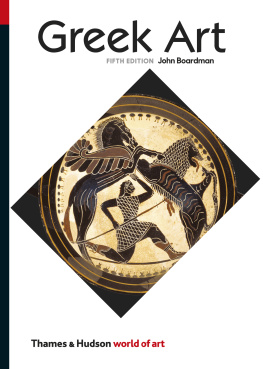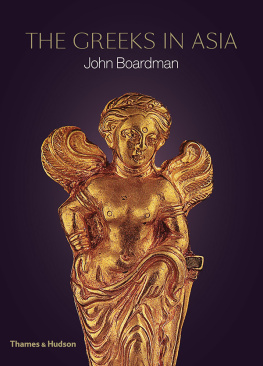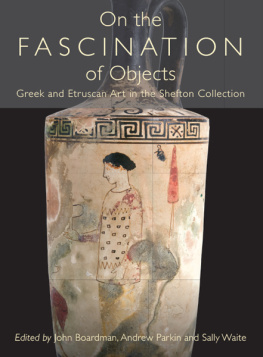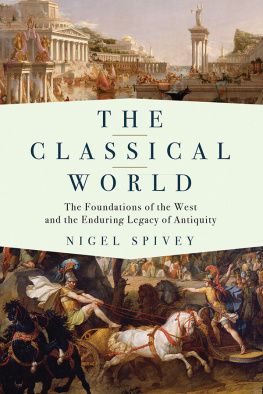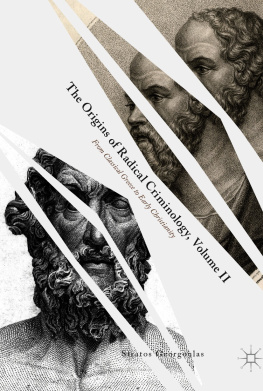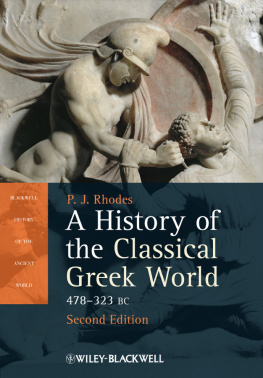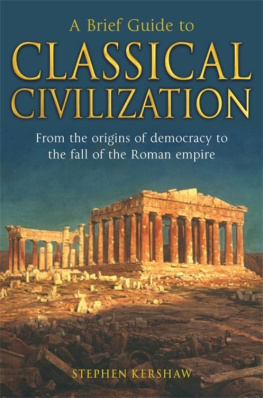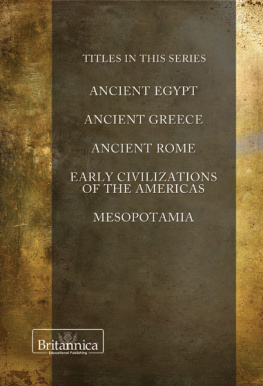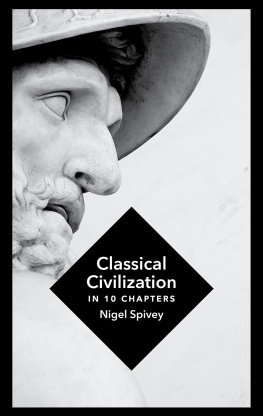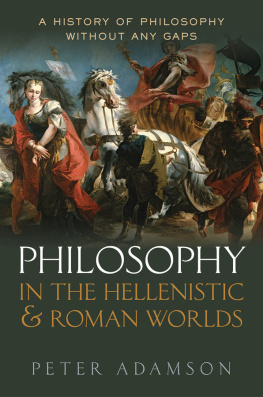GREECE AND THE HELLENISTIC WORLD
Sir John Boardman is Professor Emeritus of Classical Archaeology and Art, Lincoln College, Oxford
Dr Oswyn Murray is Fellow and Tutor in Ancient History at Balliol College, Oxford
Jasper Griffin is Professor of Classical Literature and a Fellow of Balliol College, Oxford
THE fifteen contributors to The Oxford History of the Classical World: Greece and the Hellenistic World are all distinguished authorities in their field. They are:
GEORGE FORREST, New College, Oxford, Greece: The History of the Archaic Period
OLIVER TAPLIN, Magdalen College, Oxford, Homer
JASPER GRIFFIN, Balliol College, Oxford, Greek Myth and Hesiod
EWEN BOWIE, Corpus Christi College, Oxford, Lyric and Elegiac Poetry
MARTIN WEST, Royal Holloway and Bedford New College, London, Early Greek Philosophy
SIMON HORNBLOWER, Oriel College, Oxford, Greece: The History of the Classical Period
PETER LEVI, St Catherines College, Oxford, Greek Drama
OSWYN MURRAY, Balliol College, Oxford, Greek Historians and Life and Society in Classical Greece
JULIA ANNAS, University of Arizona, Classical Greek Philosophy
ROBERT PARKER, Oriel College, Oxford, Greek Religion
JOHN BOARDMAN, Lincoln College, Oxford, Greek Art and Architecture
SIMON PRICE, Lady Margaret Hall, Oxford, The History of the Hellenistic Period
ROBIN LANE Fox, New College, Oxford, Hellenistic Culture and Literature
JONATHAN BARNES, Balliol College, Oxford, Hellenistic Philosophy and Science
ROGER LING, University of Manchester, Hellenistic and Graeco-Roman Art

Great Clarendon Street, Oxford Ox2 6DP
Oxford University Press is a department of the University of Oxford.
It furthers the Universitys objective of excellence in research, scholarship,
and education by publishing worldwide in
Oxford New York
Athens Auckland Bangkok Bogota Buenos Aires Calcutta
Cape Town Chennai Dar es Salaam Delhi Florence Hong Kong Istanbul
Karachi Kuala Lumpur Madrid Melbourne Mexico City Mumbai
Nairobi Paris Sao Paulo Shanghai Singapore Taipei Tokyo Toronto Warsaw
with associated companies in Berlin Ibadan
Oxford is a trade mark of Oxford University Press
in the UK and in certain other countries
Oxford University Press 1986,1988
The text of this edition first published 1986 by
Oxford University Press in The Oxford History of the Classical World
This edition first issued as an Oxford University Press
paperback 1991
Reissued 2001
All rights reserved. No part of this publication may be reproduced,
stored in a retrieval system, or transmitted, in any form or by any means,
without the prior permission in writing of Oxford University Press,
or as expressly permitted by law, or under terms agreed with the appropriate
reprographics rights organizations. Enquiries concerning reproduction
outside the scope of the above should be sent to the Rights Department,
Oxford University Press, at the address above
You must not circulate this book in any other binding or cover
and you must impose the same condition on any acquirer
British Library Cataloguing in Publication Data
Data available
Library of Congress Cataloging in Publication Data
Data available
ISBN-13: 978-0-19-280137-1
Printed in Great Britain by
Clays Ltd, St Ives pic
CONTENTS
Jasper Griffin
George Forrest
Oliver Taplin
Jasper Griffin
Ewen Bowie
Martin West
Simon Hornblower
Peter Levi
Oswyn Murray
Oswyn Murray
Julia Annas
Robert Parker
John Boardman
Simon Price
Robin Lane Fox
Jonathan Barnes
Roger Ling
LIST OF ILLUSTRATIONS
- Air view of the Athenian Acropolis. (Photo Father R. J. Schoder, SJ).
- The Erechtheum. (Photo J. Allen Cash).
- Athenian Geometric crater. Athens, National Museum 990. (Hirmer Fotoarchiv).
- Corinthian crater. Berlin, Staatliche Museen 1655. (After Mow. dell Inst. X, pls. 4/5).
- Athenian red-figure cup. London, British Museum E 68. (Photo Museum, courtesy of Trustees).
- Silver coin of Syracuse. Gallatin Collection. (Hirmer Fotoarchiv). Silver coin of Elis. Berlin, Regling Collection. (Hirmer Fotoarchiv).
- Kouros from Keos. Ht. 1.73 m. Athens, National Museum 3684.
- Doryphorus of Polyclitus. Ht. 2.12 m. Naples, Museo Nazionale. (Hirmer Fotoarchiv).
- Parthenon frieze, detail. Ht. 1.06 m. Athens, Acropolis Museum. (Photo Ashmolean Museum Cast Gallery).
- Detail of Alexander Sarcophagus (marble, c.325300 BC). Ht. of frieze 69 cm. Istanbul, Archaeological Museum 68 (370). (Hirmer Fotoarchiv).
- Alexander the Great (Roman marble copy from bronze statue of c.330320 BC). Ht. of head 25 cm. Paris, Louvre 436. (Documentation Photographique de la Runion des Muses Nationaux).
- Venus de Milo (late 2nd century BC). Parian marble. Ht. 2.04 m. Paris, Louvre 399. (Photo W. Swaan).
- Model of the acropolis, Pergamum (mainly 2nd century BC). (Bildarchiv Foto Marburg).
- Athena and Alcyoneus, Altar of Zeus and Athena at Pergamum (c. 16659 BC). Marble. Ht. 2.30 m. Berlin, Pergamum Museum. (Photo Museum).
- Wall painting, Vergina. Ht. 1.01 m. (Photo courtesy of Professor M. Andronikos).
- Detail of the Alexander Mosaic, from Pompeii (2nd-century BC copy of painting of late 4th century). Ht. of king's head (including hood) approx. 30 cm. (Photo W. Swaan).
LIST OF MAPS
NOTE
Cross-references to the companion volume to this book, The Oxford History of the Roman World, are given as (for example): Vol. 2, p. 100.
Introduction
JASPER GRIFFIN
THE history of Greece and Rome can be looked at in two different ways. It can be seen as forming a single whole, all the way from the emergence of the Greek city-state (the polis) in the eighth century BC to the enormous expansion and eventual disintegration of the Roman Empire, a society which rested on Roman military and political power but whose culture, literature, and arts were truly Graeco-Roman. It can also be seen as two separate stories: first, the rise of the Greek polis from poverty and obscurity to the self-confident splendours of the classical period in the fifth century BC, its extension over great areas of Asia by the conquests of Alexander, and its eventual subjugation by the Roman legions. Then there is the second story: the small city of Rome fighting its way to supremacy, first in Italy, and then in the whole of the Mediterranean basin; losing its republican constitution and becoming an Empire; conquering and exploiting the cities and kingdoms of Greece, and ruling the world until the barbarians gradually became too strong and transformed the empire into a number of states which rested on quite different practices and beliefs. Each of these two perspectives contains some important truth.

